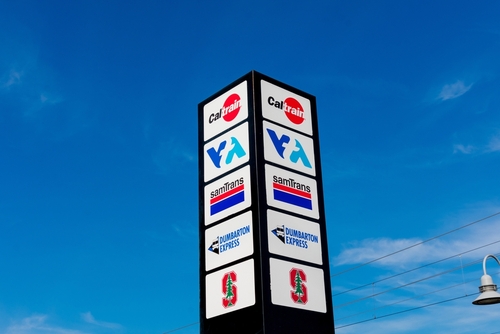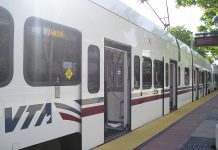
In June, the Legislature and governor agreed to a $5 billion lifeline in the budget as transit agencies’ ridership slowly recovered from the Covid shutdowns. You might also recall that the deal took some convincing due to the state’s overall budget deficit, and reports of mismanagement at Bay Area Rapid Transit.
So where does ridership and financial planning stand now?
BART, which relies heavily on passenger fares for revenue, has seen a slow but steady increase—driven mostly by weekday trips to San Francisco, the San Francisco Standard reports.
And in September, LA Metro’s monthly ridership, for bus and rail, reached 80% of its pre-pandemic levels.
But one of the top arguments in the push for more state investment was that relying on passenger fares isn’t sustainable. To that end, regional transportation planning agencies are allotted anywhere from about $1 million to more than $1.3 billion in state grants over the next two to four years.
By Dec. 31, regional planning groups have to submit an application detailing how they plan to use the money to improve ridership and how they will divvy up funds between the transit operators they oversee. Some money can be used for construction projects.
The Metropolitan Transportation Commission, the Bay Area’s nine-county planning group, will vote on the allocations later this month. But staff has recommended that 45% of the commission’s $1.17 billion be given to BART, which projects that would eliminate its operating deficit for fiscal year 2025, and reduce its 2026 operating deficit from $307 million to about $13 million.
Jim Allison, spokesperson for BART: “These funds are essential for maintaining BART service until we can get to a regional transportation measure in 2026 and a sustainable funding model thereafter.”
The remaining funds would be distributed to the region’s other transit operators, which include Alameda County’s AC Transit, San Mateo County’s SamTrans and Caltrain.
The state’s guidance also leaves some flexibility for how the money is used. The California Transit Association, however, has said that the definition of “transit operator” was too broad and could lead to “undue pressure” to use the funds on construction projects that don’t serve the intended purpose, and that the deadlines for capital projects were not strict enough.
Still, the flexibility is helpful to agencies who aren’t facing the same operations deficits. The Fresno Council of Governments could receive as much as $120 million to distribute to its three transit operators: the Fresno Area Express service, Clovis Transit and the Fresno County Rural Transportation Agency. But it doesn’t plan to use any of the money for operations.
Paul Herman, principal regional planner for the council: “Our operations costs aren’t nearly to the costs that you see in the major metro regions in the state. We are fully able to cover our costs through federal FTA funds and state funds and a half-cent sales tax that’s been in place for two decades.”
The other key part of the budget deal requires the state transportation agency to set up a transit “transformation” task force by Jan. 1—with representatives from the department, local agencies, academic institutions, nongovernmental organizations and other stakeholders—to develop policy recommendations to grow ridership and improve the experience for passengers. That’s still in the set-up process.
And the state “bridge” funding is just that—a bridge.
That’s why—after San Francisco Democratic Sen. Scott Wiener abandoned an idea to increase Bay Area bridge tolls to help fund transit—the Metropolitan Transit Commission and Bay Area Association of Governments are making plans for a regional ballot measure in 2026, with legislation next year to allow that.
This article originally appeared on CalMatters.org.









